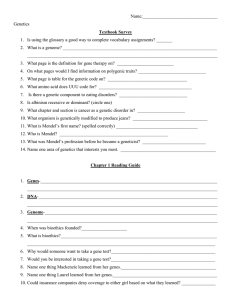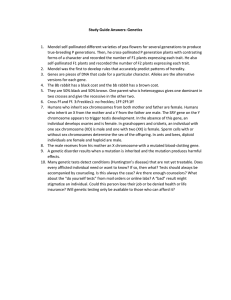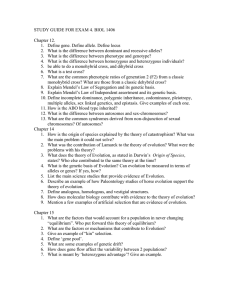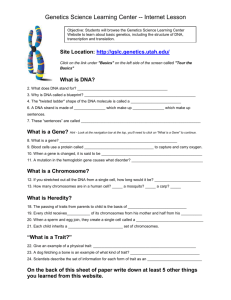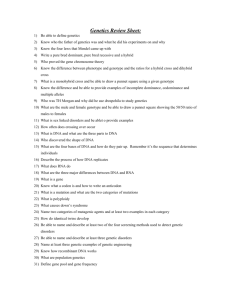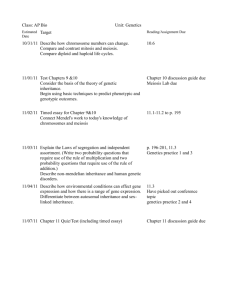Outcomes
advertisement
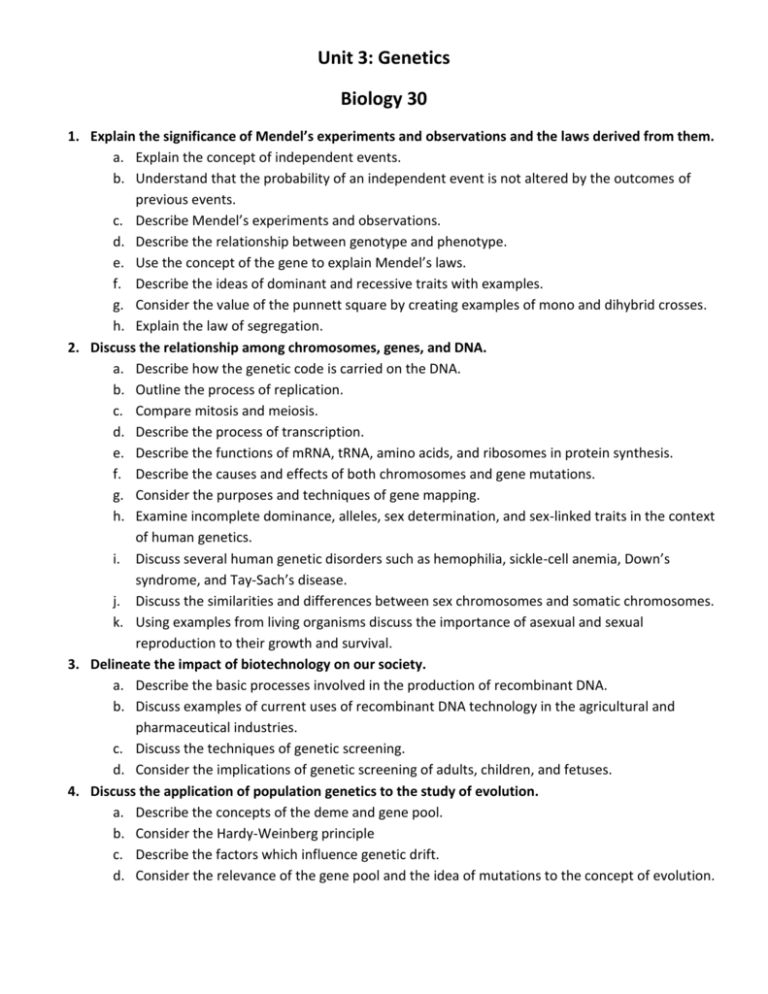
Unit 3: Genetics Biology 30 1. Explain the significance of Mendel’s experiments and observations and the laws derived from them. a. Explain the concept of independent events. b. Understand that the probability of an independent event is not altered by the outcomes of previous events. c. Describe Mendel’s experiments and observations. d. Describe the relationship between genotype and phenotype. e. Use the concept of the gene to explain Mendel’s laws. f. Describe the ideas of dominant and recessive traits with examples. g. Consider the value of the punnett square by creating examples of mono and dihybrid crosses. h. Explain the law of segregation. 2. Discuss the relationship among chromosomes, genes, and DNA. a. Describe how the genetic code is carried on the DNA. b. Outline the process of replication. c. Compare mitosis and meiosis. d. Describe the process of transcription. e. Describe the functions of mRNA, tRNA, amino acids, and ribosomes in protein synthesis. f. Describe the causes and effects of both chromosomes and gene mutations. g. Consider the purposes and techniques of gene mapping. h. Examine incomplete dominance, alleles, sex determination, and sex-linked traits in the context of human genetics. i. Discuss several human genetic disorders such as hemophilia, sickle-cell anemia, Down’s syndrome, and Tay-Sach’s disease. j. Discuss the similarities and differences between sex chromosomes and somatic chromosomes. k. Using examples from living organisms discuss the importance of asexual and sexual reproduction to their growth and survival. 3. Delineate the impact of biotechnology on our society. a. Describe the basic processes involved in the production of recombinant DNA. b. Discuss examples of current uses of recombinant DNA technology in the agricultural and pharmaceutical industries. c. Discuss the techniques of genetic screening. d. Consider the implications of genetic screening of adults, children, and fetuses. 4. Discuss the application of population genetics to the study of evolution. a. Describe the concepts of the deme and gene pool. b. Consider the Hardy-Weinberg principle c. Describe the factors which influence genetic drift. d. Consider the relevance of the gene pool and the idea of mutations to the concept of evolution.
